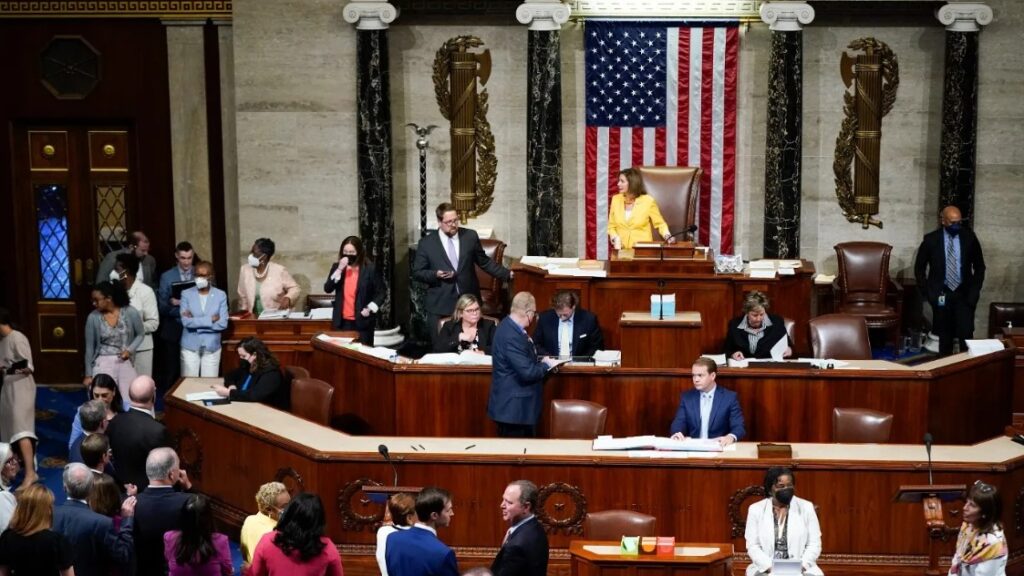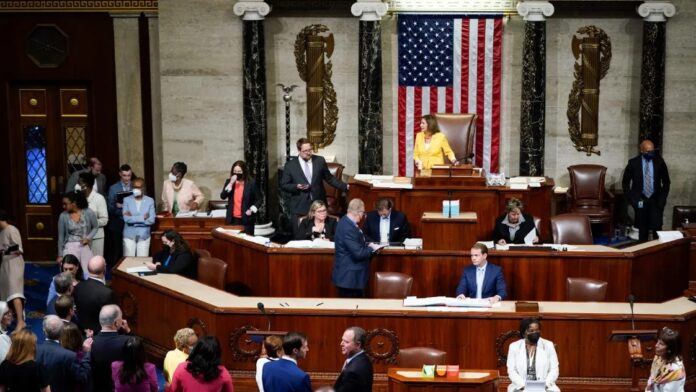US government shutdown deal discussions have dominated American political news, and now, a major step toward reopening federal operations has finally moved forward. After weeks of halted services, unpaid federal employees, and tense back-and-forth negotiations between political parties, the Senate has passed an agreement intended to end what has become the longest government shutdown in United States history.
For more than 40 days, the shutdown left nearly 1.4 million federal workers either furloughed or working without pay, while important public services slowed or stopped entirely. Programs that support millions of Americans, including air travel safety oversight and food assistance, were strained. The situation became a national concern, impacting families, communities, and the overall economy.
This US government shutdown deal offers a path toward restoring operations, but several steps remain before everything is officially resolved. Below, we break down what happened, who was involved, what’s included in the agreement, and what might come next.

What Led to the US Government Shutdown Deal?
The government shutdown began on October 1, when Congress failed to approve the funding necessary to keep federal operations running. The shutdown quickly became the longest in American history, surpassing every previous impasse.
Republicans and Democrats were locked in position over government spending priorities. While Republicans wanted to move forward with funding packages, Democrats insisted that certain healthcare subsidies must be addressed first before they would support any funding agreement.
The stalemate affected millions of Americans. Some essential services continued at reduced capacity, while others were paused entirely. Many families depending on federal nutrition assistance programs grew increasingly uncertain about future support.
Bipartisan Support Made the Deal Possible
The breakthrough came after a weekend of renewed negotiations in Washington. Senate Majority Leader John Thune, working closely with the White House, reached terms with several Democratic senators, including:
-
Jeanne Shaheen (D-NH)
-
Maggie Hassan (D-NH)
-
Angus King (I-ME), who caucuses with Democrats
The Senate required 60 votes to advance the measure. Republicans, who hold a 53–47 majority, gained eight Democratic votes, while losing only one Republican vote (Senator Rand Paul of Kentucky), who expressed concern over national debt increases.
This collaboration allowed the US government shutdown deal to move forward for formal consideration.
Key Parts of the Shutdown Agreement
1. Temporary Government Funding
The measure funds much of the government until January 30, meaning this is not a permanent resolution. Another shutdown could occur if Congress fails to reach a longer-term agreement.
2. Healthcare Subsidy Vote Scheduled
Democrats were pressing for protections of healthcare subsidies used by millions to purchase insurance. The deal includes a commitment to hold a vote in December on extending these subsidies. Some Democratic lawmakers argue this commitment is not strong enough, which may resurface tensions later.
3. Federal Employee Back Pay
The agreement guarantees that all federal workers affected by the shutdown will be paid retroactively, restoring wages that workers went weeks without.
4. SNAP Benefits Extended
Funding for the Supplemental Nutrition Assistance Program (SNAP) is ensured through next September, protecting food support for 1 in 8 Americans.
5. Agency-Specific Funding Bills
Three appropriations bills included in the deal will fund:
-
Veterans Affairs
-
Agriculture
-
Several other essential department operations
Why Some Democrats Are Criticizing the Deal
Not all Democrats were satisfied with the US government shutdown deal. Several argued that accepting the agreement without firm, written healthcare promises weakens negotiating leverage. Senator Chuck Schumer, the Democratic leader in the Senate, publicly opposed the vote, saying:
“This bill does nothing to ensure that the healthcare crisis is addressed.”
California Governor Gavin Newsom called it “pathetic” that the shutdown ended without concrete health care guarantees.
This disagreement reveals that political tensions remain, even as the government moves closer to reopening.

What Happens Next?
The deal must now pass the US House of Representatives. While the Senate’s vote signals progress, the House may introduce new challenges or revisions. If the House approves the agreement, the government will officially reopen, and full operations will resume.
However, because the deal is temporary, a similar funding battle could happen again early next year.
For ongoing bill tracking and text of legislation, see the official congressional resource:
https://www.congress.gov
Final Thoughts
The US government shutdown deal represents progress, relief, and a moment of cooperation in Washington. But it is also a reminder of how complex and fragile the United States legislative process can be. As federal employees return to work and services resume, the real test will be whether lawmakers can negotiate a durable, long-term funding strategy that prevents similar disruptions in the future.

